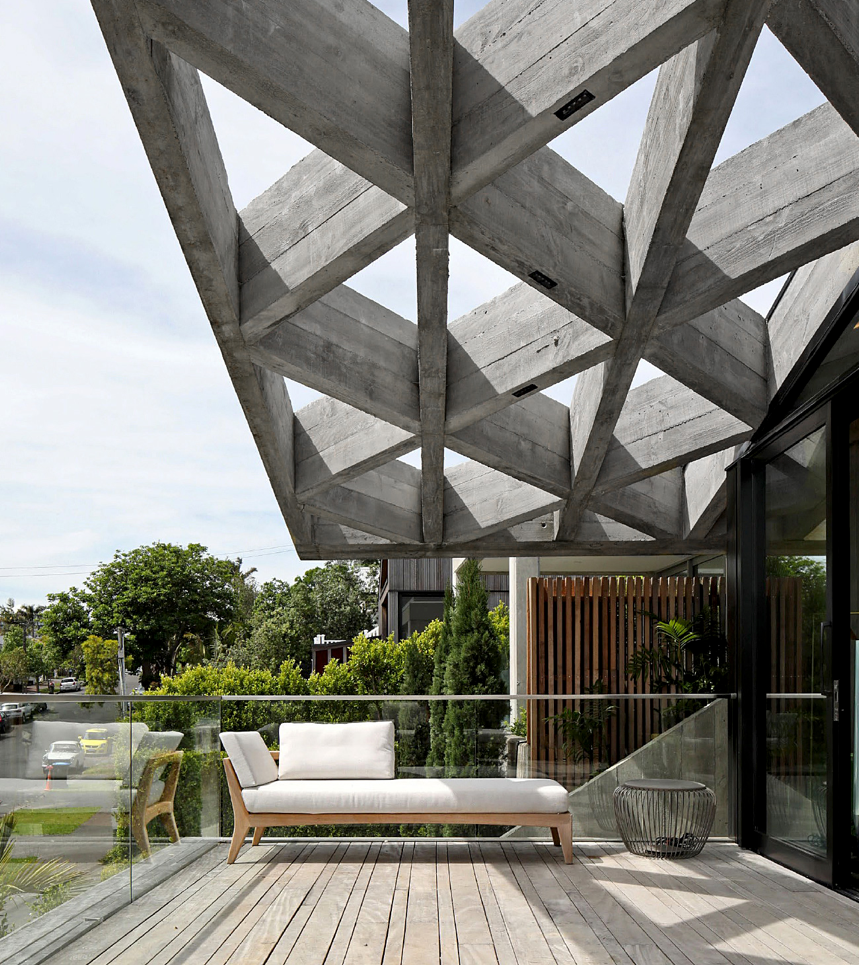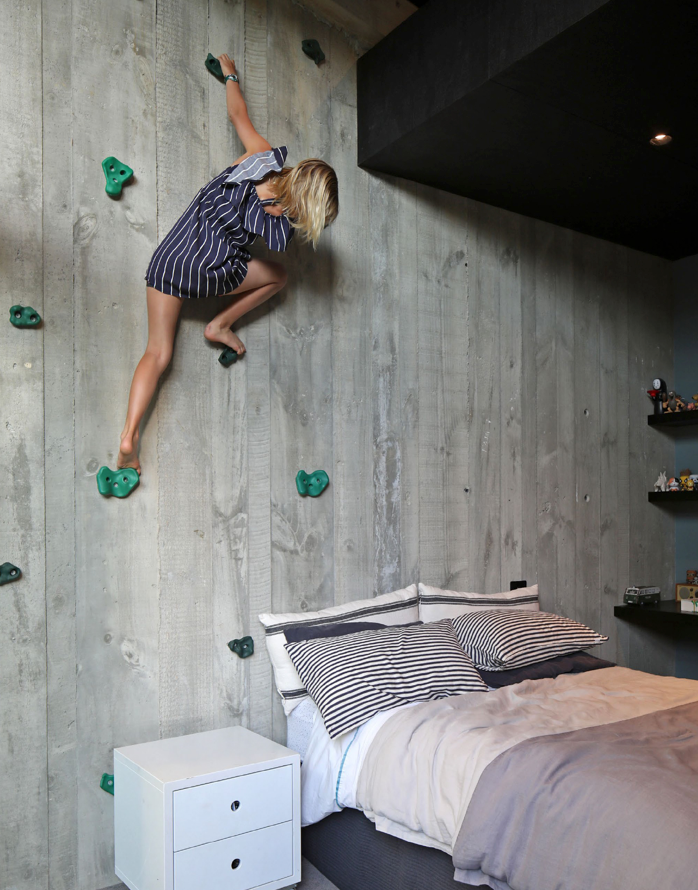“The concept for the house started many years ago when we spotted a diagonal, cantilevered concrete roof in a 1960s book on architecture and it started us thinking we could do something like that for our own home on a site in Grey Lynn,” says Cam. “I took the idea to Jack and it evolved from there.”
Newnham, Ireland, and McKinney have worked on about 20 projects together over a number of years. “I don't think I would have even attempted a project with the complexity of this one if Cam wasn't the builder as he has an amazing skill set. He, like me, loves concrete and what we can do with it,” says Jack.

